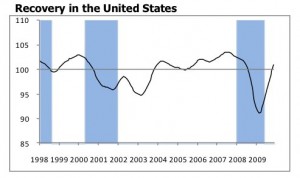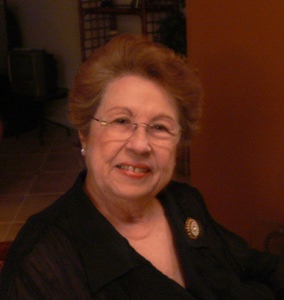Posted by Elena del Valle on February 10, 2010
By Carlos M. Rivera-Cuesta, APR

Carlos M. Rivera-Cuesta, APR, executive partner, Partners Communications
Photo: Carlos M. Rivera-Cuesta
This multiple-part question might be asked many times when the subject surfaces regarding how to advance as a public relations professional: “What one step can I take to increase my knowledge and understanding, enhance my career and boost my earning potential?” A growing number of public relations professionals are considering the Accredited in Public Relations (APR) as a way to accelerate their immediate career and promote lifelong advancement. What is the true value behind these three letters? What does the designation mean to public relations practitioners?
Those who earn Accreditation are set apart as individuals and also part of an exclusive group of around 5,000 practitioners worldwide. They also, at least statistically, can earn more than non-Accredited colleagues.
Click here to read the complete article.
Hispanic Marketing and Public Relations Understanding and Targeting America’s Largest Minority book

“A must resource for practitioners/professionals expecting to reach US Hispanics; also valuable for college programs in marketing, public relations and communications. Highly recommended.”
Choice magazine
Click here for information on the Hispanic Marketing & Public Relations book
Posted by Elena del Valle on February 3, 2010
By Josh Norek

Josh Norek, deputy director, Voto Latino
Photo: Josh Norek
My wife – a first generation Salvadoran-American attorney who grew up in some of the roughest areas of Los Angeles – once described part of my nearby hometown of Albany, NY as “the scariest place I’ve ever been.” When a girl from East LA thinks Albany is the most dangerous city in America, you know upstate New York has a problem.
Make no mistake: upstate New York is a microcosm of America’s Rust Belt and agricultural communities. As manufacturing and farming declined upstate, so did the area cities’ populations and their corresponding tax bases: in the Capital District region, Albany’s population dropped by 29%, Schenectady’s by 32% and Amsterdam’s by a staggering 43% between 1950 and 2000. Had Latino immigrants not moved to these small cities in the past two decades, the population losses would have been far higher.
Click here to read the complete article.
Hispanic Marketing and Public Relations Understanding and Targeting America’s Largest Minority book

“A must resource for practitioners/professionals expecting to reach US Hispanics; also valuable for college programs in marketing, public relations and communications. Highly recommended.”
Choice magazine
Click here for information on the Hispanic Marketing & Public Relations book
Posted by Elena del Valle on January 25, 2010

A mother and her daughter enjoy an embrace
Photo: U.S. Census Bureau, Public Information Office (PIO)
Native born Americans are people who are born in the United States and its territories or born of one or both parents who are United States citizens. Naturalized Americans are foreign born although their children, whether they are born in the United States or abroad, may claim United States citizenship. In 2007, one out of eight residents (38.1 million people out of a total population of 301 million) of the United States was foreign born. In contrast to the last 40 years when most immigrants haled predominantly from Europe, in 2007, 80 percent of all foreign born residents was born in Latin America or Asia.
While the majority of the native born, 78 percent, was White only 46 percent of the foreign born self reported their race as White. The second largest racial group among the foreign born was Asian, 23 percent; and Some Other Race was the final group with 21 percent. Looking at it another way, the race with the highest proportion of foreign born was Asian with 67 percent, followed by Some Other Race (43 percent), and Native Hawaiian and Other Pacific Islander (24 percent).
Foreign born Mexicans represented the largest subgroup among the foreign born (see Mexico remains top country of origin of foreign born); they reported 53 percent White and 45 Some Other Race. That represents a contrast with Cubans which reported 87 percent White; and people born in Vietnam (99 percent), China and Korea (98 percent), the Philippines (97 percent) and India (94 percent) who reported Asian race.
At the same time 47 percent (18 million people) of the foreign born self reported being of Hispanic ethnicity. Among them 54 percent were White and 43 Some Other Race. More than 75 percent of Hispanic foreign born residents were from Mexico and Central America and 83 percent of those were from Mexico originally.
Forty percent of the 45.4 million Hispanics in the United States was foreign born. Among those the percent that is foreign born varies depending on the country of origin. For example, 40 percent of Mexicans was foreign born; 61 percent of Cubans was foreign born and 66 percent Salvadoreans was born on foreign land.
This data is based on Race and Hispanic Origin of the Foreign-Born Population in the United States: 2007, a report by Elizabeth M. Grieco of the United States Census Bureau released last week.
“Marketing to Multicultural Kids” audio recording

Michele Valdovinos gives a presentation and participates in an extended Q&A discussion about multicultural children based on a Phoenix Multicultural and Nickelodeon study of 1,300 multicultural children in 16 United States markets.
Find out about
• The Phoenix Multicultural Kids Study
• Relationship between children and their context
• Issues relating to family, technology and media, diversity, buying power, relationships in household, self perception, values, acculturation, cultural heritage, frequency of media activity, income and spending, brand preferences, the American Dream
• How many billions of dollars buying power multicultural kids children have
• Children’s spending attitudes, habits by ethnicity
• How much money a year Hispanic kids have available to spend
• Types of products Hispanic kids buy
Click here for information on “Marketing to Multicultural Kids” audio recording
Posted by Elena del Valle on January 13, 2010

Click on image to enlarge
Graphic: Organization for Economic Co-operation and Development (OECD)
With an additional 85,000 jobs lost in the United States last month there is no doubt that joblessness has become the leading and most serious indicator of our nation’s economic crisis. According to a recent The New York Times article, as of December 2009 most unemployed Americans remain in that state for 29 weeks, the longest since the government began tracking that data in 1948. In order just to keep pace with new arrivals into the workforce the country needs 100,000 new jobs a month. There simply are not enough jobs. Worst of all there is no prospect of enough new jobs developing anytime soon. Are things getting better elsewhere?
At the end of last week the Organization for Economic Co-operation and Development (OECD) which tracks changes in 29 countries announced its composite leading indicators or CLIs for November 2009 point to “stronger signals for recovery than last month’s assessment.” Researchers calculated CLIs for 29 OECD countries and 9 zones.
Analysts at the Paris-based organization interpret the new data to indicate an upward movement in the index of industrial production for the seven countries they examined, except Canada and the United Kingdom. The release also indicates that the CLIs for those major seven countries (Canada, France, Germany, Italy, Japan, United Kingdom and United States) moved above their long-term trend, indicating “an expansionary outlook relative to trend.” The organization’s data for major non member countries economies points to a recovery.
Specifically, the CLI for the OECD area increased by 1.0 point in November 2009 and was 8.2 points higher than in November 2008. The CLI for the United States increased by 1.0 point in November, 6.8 points higher than a year earlier. The Euro area’s CLI increased by 1.1 point in November, 10.9 points higher than a year ago. The CLI for Japan increased by 1.2 point in November, 5.4 points higher than a year ago.
The CLI for the United Kingdom increased by 1.2 point in November 2009, 10.7 points higher than a year ago. The CLI for Canada increased by 1.0 point in November, 9.4 points higher than a year ago. The CLI for France increased by 1.2 point in November, 11.9 points higher than a year ago. The CLI for Germany increased by 1.4 points in November, 12.3 points higher than a year ago. The CLI for Italy increased by 0.9 point in November, 13.8 points higher than a year ago.
The CLI for China increased 0.2 point in November 2009, 7.6 points higher than a year ago. The CLI for India is remained the same in November and 4.3 points higher than a year ago. The CLI for Russia increased by 1.0 point in November, 3.4 points higher than a year ago. The CLI for Brazil increased by 0.8 point in November, 1.3 points lower than a year ago.
What these numbers mean to everyday people in practical terms is anyone’s guess. For now, it seems to offer a small glimmer of hope that the famous V shape of the economic trend is moving up and away from the bottom in some countries.
OECD provides a forum for member governments to compare policy experiences, “seek answers to common problems, identify good practice and coordinate domestic and international policies.” The OECD-Total covers 29 countries: Australia, Austria, Belgium, Canada, Czech Republic, Denmark, Finland, France, Germany, Greece, Hungary, Ireland, Italy, Japan, Korea, Luxembourg, Mexico, Netherlands, New Zealand, Norway, Poland, Portugal, Slovak Republic, Spain, Sweden, Switzerland, Turkey, United Kingdom, and United States. The Euro area (only Euro area countries that are members of OECD) covers 13 countries: Austria, Belgium, Finland, France, Germany, Greece, Italy, Ireland, Luxembourg, the Netherlands, Portugal, Slovak Republic and Spain. The Major Five Asia area covers China, India, Indonesia, Japan and Korea.
Posted by Elena del Valle on January 11, 2010

Chocolate brownie, dark chocolate tablets and cocoa powder
Photos: Simon & Baker, National Confectioners Association
When I think of chocolate my mouth waters. I, like millions of people around the world, especially in the West, think this derivative of the cocoa bean delicious. It is interesting to note that western nations seem to be the most fond of chocolate. While 85 percent of cocoa is imported from West Africa 70 percent of the profit from chocolate sales is made in western countries; and 80 percent of the chocolate market is controlled by only six companies such as Nestle, Mars and Cadbury, according to the World Atlas of Chocolate website.
Could weather play a role? According to Chocolate.org, chocolate is consumed by more people in the winter than in other seasons. This might explain why 16 of the top 20 chocolate consumers are European; they are said to eat 40 percent of the chocolate produced. In the United States, sales of chocolates are more or less even nationally with the exception of the southern states in summer where sales drop slightly. Peak chocolate periods, as might be expected, are Valentine’s Day, Christmas, Halloween and Easter.
In 2009, in spite of the economic hardships faced by so many people across international boundaries, chocolate sales increased. Perhaps not unexpectedly chocolate candy sales in China and the Ukraine rose 18 percent and 12 percent, respectively. Both countries have exhibited steady sales increases since 2005 and some market researchers believe the growth will continue through 2013.
“It’s clear that despite economic trouble this year, the world’s chocolate lovers didn’t deviate from their favorite treat. Chocolate is a small, affordable indulgence for shoppers who are cutting back on spending elsewhere. Even in countries not known for chocolate consumption, sales are on the rise,” said Marcia Mogelonsky, global food and drink analyst at Mintel, an international supplier of consumer, product and media intelligence.

Chocolate truffles
Last year, in Great Britain chocolate sales grew 5.9 percent while in the United States there was an increase of 2.6 percent in chocolate sales compared to 2008. Chocolate sales in Argentina rose 1.8 percent from the previous year; and sales of the brown treats went up 3.2 percent in Belgium. The sales increase in the United States may be the result of inflation, population growth, and new product development, according to Susan Whiteside, spokesperson for the National Confectioners Association, a trade organization dedicated to “advancing and promoting the interests of the confectionery industry and its consumers.”
“We agree with the Mintel findings that chocolate sales in the United States increased (last year). Sales for the period ending November 1 (2009) increased 2.8 percent while unit sales dropped slightly,” said Whiteside, who explained by phone that a 1 to 3 percent annual total revenue increase is normal in this market regardless of what may be happening in the economy.
Perhaps people concerned, depressed, anxious or just waiting to see how and when international economic woes will settle down are turning to chocolate for solace. To take advantage of the trend chocolate makers offered the same or a greater number of chocolate products in 2009 compared to 2008. According to the Mintel Global New Products Database (GNPD), in Latin America, Asia, the Middle East and Africa, companies released more new products than they did in 2008.
Swiss shoppers spend the most for chocolate per person per year, spending the equivalent of $206. Belgians and Brits spend $90 and $106. Consumption of chocolate in the Americas is more moderate with individuals in the United States spending $55 each, and Argentinians buying an average of $35 per year of chocolate candy.
While revenue from chocolate sales in the United States increased the actual number of chocolate products sold decreased (the difference was made up by an increase in the price of chocolates), according to Whiteside. Perhaps because of the price increases representatives from United States chocolate makers Hershey’s (who also make Cadbury in the United States), Nestle’s and Ghirardelli did not reply to email and telephone request for comment.
According to a July 2008 Mintel survey, 78 percent of respondents to a United States survey buy chocolate for themselves and 47 percent bought the sweet treat for others in the past year. The most common reason (two thirds of respondents) they gave for purchasing chocolate was because they had a craving. Two thirds of respondents bought dark chocolate, half bought premium brand chocolate, 16 percent bought sugar-free and 13 percent purchased organic chocolate.
In recent years Americans have been purchasing an ever growing number of premium chocolate products from brands like Ghirardelli, Ferraro and Lindt. In the United States, consumers prefer milk chocolate but their preference for dark chocolate is increasing. This change in the market might be explained by the aging adult population’s preference for stronger flavors, according to Whitewise.
Target Latinos effectively by understanding how they shop
“Hispanic Holiday Shopping Patterns” audio recording

Manuel Delgado, CEO Agua Marketing, gives a presentation and participates in an extended Q&A discussion about
- Hispanic shopping patterns national survey
- Why Latino consumers may be more desirable than general market shoppers
- Hispanics holiday shopping patterns and behaviors
Click here for information on “Hispanic Holiday Shopping Patterns” audio recording
Posted by Elena del Valle on November 30, 2009

Manuel Wernicky, president, Adrenalina
Photo, radio ad: Adrenalina
A Spanish language Tecate beer radio ad dubbed Disclaimer by Adrenalina, the ad producer, is noteworthy because of its comic take on the disclaimer sections found in many ads. The ad, which explains why wimpy men who lack character should avoid drinking Tecate, was recently recognized with a silver trophy at the El Ojo de Iberoamérica Festival in Buenos Aires, Argentina.
In a rapid-fire format, the ad indicates that Tecate discourages wimpy men from consuming the Mexican beer. The ad points out that listeners who own dogs named Puchi, Tinkerbell or Princess, or call a girlfriend Baby or Little Smurfette haven’t got what it takes to enjoy Tecate. The beer promoters set out to reaffirm Tecate’s image targeting Mexican men living in the United States who favor the brand.
The Disclaimer Tecate beer radio ad was recorded at the end of January 2009 in Miami and New York at a dual studio recording session at RedCar, Miami with Paco Olavarrieta, in-house voiceover talent and chief creative officer, for the disclaimer portion of the spot; and at Bond, New York with Mexican actor Marco Treviño.
The Adrenalina team for the 2009 Tecate Disclaimer radio spot included Manuel Wernicky, president, chief ideas officer and managing partner; Paco Olavarrieta, chief creative officer and managing partner; Ivar Rodríguez, associate creative director; Daniel Roversi, agency producer; and Yonathan Bendesky, brand leadership.
The ad has been airing via national and regional Spanish-language networks Univision Radio, ESPN Deportes Radio and Lieberman Media since April 2009. According to an agency spokesperson, Adrenalina presented the spot to consumers in research conducted this year and the Disclaimer ad received the most laughs, with consumers reporting the highest recall for the spot and saying that the spot was most memorable for it’s humorous message and use of colloquial phrases.
“El Ojo is further recognition that our team’s creative work resonates among our colleagues in the global advertising community,” said Wernicky.
Adrenalina, the lead agency for Tecate and Tecate Light, recently embarked on its third consecutive advertising and marketing programs for the brands’ distributor, Heineken USA via Cervecería Cuauhtemoc Moctezuma (CCM) of Monterrey, Mexico. New creative for both brands is expected to roll out in early 2010.
El Ojo de Iberoamérica is a marketing and advertising event created to showcase creativity and innovation in advertising, communication, marketing and entertainment in Latin America, Spain and Portugal.
Adrenalina, a New York minority-owned and managed ad agency seeks to create ideas that provoke engagement, experience and emotion between brands and consumers. MDC Partners is a partnership of entrepreneurial firms that offer marketing communications services to clients in North America, Europe and Latin America.
Posted by Elena del Valle on October 12, 2009

Three Olives Vodka Grape print ad
Video: 5W Public Relations
Earlier this year, Proximo, a spirits importer, launched a new, multi-million dollar television comic advertising campaign for Three Olives Vodka, the brand’s first broadcast outreach. Parallel efforts in print and an online contest will support the What’s Your O-Face? Campaign and its 10 new 30-second television spots. The idea behind the campaign is to emphasize that drinking their vodka is fun and promote the flavors of the company’s vodka line. Scroll down to watch Three Olives Vodka ads.
“The development of our new campaign was driven by research that produced two key findings: first, that consumers felt the fun had been taken out of vodka with virtually all brands scrambling for the same crowded, so-called ‘luxury’ positioning,” said Elwyn Gladstone, vice president of Marketing at Proximo.
“Secondly, the Three-O flavor range has become the benchmark amongst flavored vodkas for its wild, surprising and intense taste experience. These findings are reflected in the hilarious imagery of the new campaign, featuring a series of situations that one would expect to garner a look of shock, but instead are met with a stoic impression. That is, until the subject tastes shockingly delicious Three-O Vodka.”

Three Olives Vodka Root Beer print ad
The $10 million television campaign, created by Agent16, formerly Mezzina Brown & Partners, a New York-based advertising agency, was launched August 31 on cable channels BRAVO and E! Plans were in the works for buys of interactive, expandable rich media on TMZ and Perez Hilton to showcase the complete collection of TV spots, as well as continuing the print campaign in national magazines, including Maxim and US Weekly.
Imported from England Three Olives Vodka is handcrafted in small batches and made from English wheat after quadruple distilling and quadruple filtration. It’s available in 17 flavors including Cherry, Grape, Passion Fruit, Pomegranate, Chocolate, Mango, Root Beer, Tomato, and Triple Shot Espresso, and Bubble, the newest flavor. It sells for $19.99 and up for a 750 milliliter bottle.
Proximo, a family owned company based in New York City, also sells 1800 Tequila, Gran Centenario Tequila, Maestro Dobel Diamond Reposado Tequila, and Ron Matusalem rum.
Posted by Elena del Valle on October 7, 2009
By Luisa M. Fournier-Padró

Luisa M. Fournier-Padró
I say that old is how and what we feel. If we think we are not old, then we should live the age we think and feel we are without giving a thought to what other people might think or say. “Getting old isn’t nearly as bad as people think it will be. Nor is it quite as good,” according to the Expectations versus Reality report by Pew Research Center.
What does that mean? Getting older is part of life but it is not the same for all, it depends on past life circumstances that could determine the path of lessons to apply and survive, especially during the current economic crisis that easily flows into an emotional one.
Click here to read complete article Senior issues not always what we think, for Latinos in particular
Posted by Elena del Valle on September 30, 2009

Mi Altos website
Photos: MiAltos.com
In October 2007 Juan Carlos Perez Jr. launched MiAltos.com, a website for fans of Jalisco, Mexico, their families and friends. His website is noteworthy because it is based in Ontario, California and 90 percent of his 4,116 registered members (as of September 2009) and 29,480 monthly visitors are in the United States.

Juan Carlos Perez, Jr., owner, MiAltos.com
“Our goal is to reconnect friends and families that have been distanced due to emigration to the United States. Members are able to share and reconnect their lives by sharing pictures, posting blogs, and actively participating in meaningful discussions, said Perez Jr. “MiAltos has been a great success because it caters to a very focused group of people and is able to provide them with content they cannot find anywhere else.
Many of our members had never owned or used a computer before they joined MiAltos. The allure of the site has engaged these members into learning how to utilize computers and the internet, and they have now become regular contributors to the site. Ultimately the members have been the foundation for our success, and we greatly appreciate them.”
Perez Jr. believes the average user is between 18-34 years old and visitors aged 35-49 are also growing quickly. There are slightly more women than men and the typical users are members of middle class working families earning up to $30,000 per year. The largest concentration of users reside in California, Illinois, Iowa, and Texas. There is also measurable usage from Mexico and Spain.
He promotes the site primarily through word of mouth referrals. According to his findings, over 60 percent of the portal’s members found the site that way. The rest relied on organic search engine results, primarily Google and Bing.
Reach Hispanics online today with
“Marketing to Hispanics Online” audio recording
Identifying and characterizing the booming Hispanic online market



Joel Bary, Alex Carvallo and Matias Perel
Find out about
• The 16 million Latino online users
• Latino online users by gender
• What they do online
• Their language preferences
• How to reach Hispanic urban youth online
• What affects their online behavior
• What influences their purchases
Click here for information about “Marketing to Hispanics Online”
Posted by Elena del Valle on September 9, 2009
But how well do they understand the 401(k) plan? An overview of the lack of financial information in Spanish
(Part one of a two part article; part two will be published next week)
By Silvia Pingitore
Journalist, writer and illustrator

The study 401(k) plans in living color – published by the business consultant Hewitt Associates and the non-profit educational foundation Ariel Investments – made a large scale analysis of 401(k) participation by race, studying the ethnic disparities in retirement savings.
Examining 3 million 401(k) plans at 57 corporations among the largest firms in the United States, this landmark study has shown that African-American and Hispanic workers save significantly less for retirement than their white and Asian colleagues.
Click here to read part one of Latinos save less for retirement
“Happy for No Reason” audio recording

Presenter Marci Shimoff, author, Happy for No Reason
What: An audio presentation by Marci Shimoff and Q&A with Marci Shimoff and HispanicMPR.com audio program host Elena del Valle about finding happiness.
Available exclusively on HispanicMPR.com!
Click here to listen to a short interview with Marci
Click here for more information on “Happy for No Reason” audio recording with Marci Shimoff





























